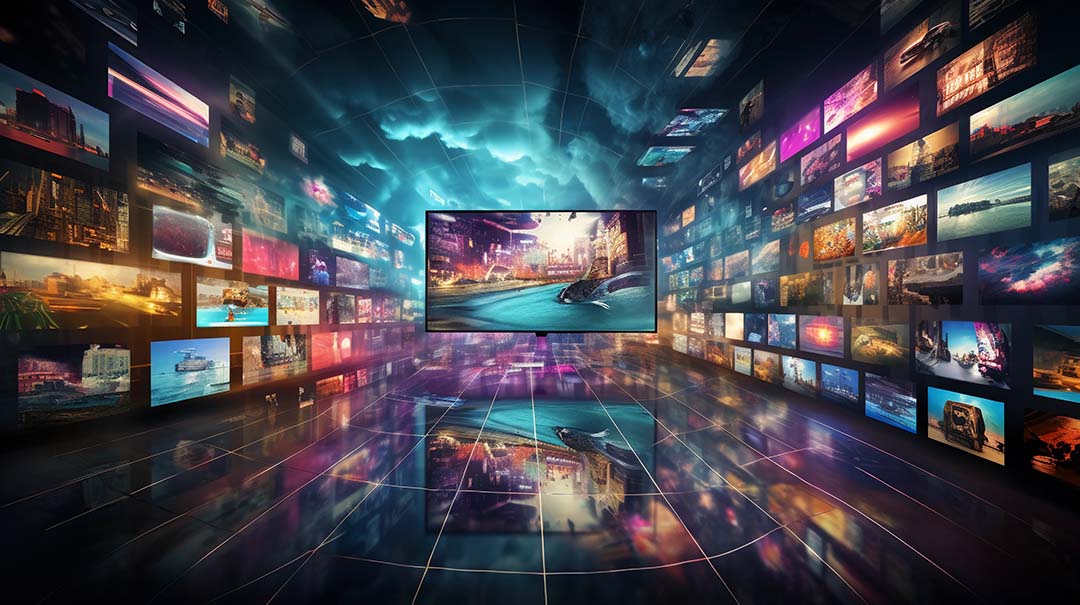Alphabet soup starring HDR and WCG
“Hey Guys, let’s re-invent the entire TV and Cinema chains from Camera to Screen!” said no high-ranking executive in any board meeting ever. The whole concept sounds like crazy talk when you say it out loud, but in reality that’s what the High Dynamic Range (HDR) and Wide Color Gamut (WCG) revolution have done over the recent years.
We’ve moved on from glowing goop
The cinema world, shooting on film, has always had a little more freedom that the TV world when it comes to controlling brightness, color and contrast between the camera and the screen. There were limitations in physics and chemistry, of course. You could make the projector brighter assuming you didn’t melt the film and you could make the film more sensitive provided you liked that grainy look on the screen. The TV world, however had a fixed and inflexible transmission infrastructure that was stabilized in the 1950s. The relationship between the photons going into a camera and the photons coming out of most of today’s TV are still based on the response characteristics of the glowing goop you find inside CRTs (Cathode Ray Tubes) of that early era.
So in comes HDR. “Hey guys the eye can capture about 14 stops of brightness so let’s transmit that.” is the fundamental idea behind HDR. In a basic MPEG system, the brightness of most pixels is represented by a number between 0 and 255. This gives you the ability to represent 8 stops (28 values) whereas we would like to represent 214 values in our HDR chain i.e. the brightness of each pixel is represented by a number between 0 and 16383. Sounds simple really. But, what is Dolby Vision HDR?
Let’s redesign the entire Cinema and Broadcast Value chain
The complexity comes with making sure that each and every device in the value chain from camera through switcher and ingest and transcode understands what these new numerical values actually mean. In an ideal world we would replace all the old kit with brand new kit, but that’s not really practical so the HDR systems that were created have compatibility modes to allow these new bright, colorful pixels to travel across traditional SDI, H.264 and IP transmission paths with good integrity to appear at the final display to show wondrous pictures.
Now, what is Dolby Vision HDR? Dolby Vision is one of the HDR systems that requires metadata to work. Its trick is identifying that in any typical scene you only use a portion of the total available dynamic range. A dark shadowy scene in a cave will need more bits allocated in the small numerical pixel value ranges. A bright seaside scene on a sunny day will need more bits allocated in the large numerical pixel value range. This scene by scene adaption is enabled with metadata that tells each device how to behave for that scene. The Dalet AmberFin team is really proud that it’s the first software only transcoder and workflow engine to have full support for the Dolby Vision system. It can do this in a wide range of different codecs in parallel with the usual array of high quality video processing functions from scaling to Standards Conversion.

The Dolby Vision metadata itself might be carried in a sidecar XML file or embedded within the media file as a data track. Whichever mechanism is used, it’s vitally important to retain the synchronization between the metadata and the images to get the best results particularly when aligning metadata changes to hard cuts in the video. This becomes doubly important when frame rate converting because blended frames and mis-timing of metadata combined are highly visible, highly annoying and consume a lot of bitrate in the final encoding. A transcoder like the Dalet AmberFin platform gets all of those complex factors right first time, resulting in high efficiency, low bitrate, outstanding picture.
In today’s era, the consumer often lead the professionals
So, what is Dolby Vision HDR and why is it important? HDR is important because the consumers of media get to see HDR on the content they make on their mobile devices. If the paid-for entertainment content they see on other platforms looks washed out and old-fashioned by comparison, then this will be a factor in what media gets consumed. If anyone has a spare crystal ball to help predict what this future might look like, then I would be very grateful to borrow it for a while!

Featured in: Dalet AmberFin | Dolby Vision | HDR | Media Processing | Transcoding | WCG |
With 30 years in the industry, Bruce looks after Media Technology for Dalet. An engineer who designed antennas, ASICs, software, algorithms, systems and standards, Bruce is best known for being @MrMXF and you can get his book on Amazon.
More Articles By Bruce


